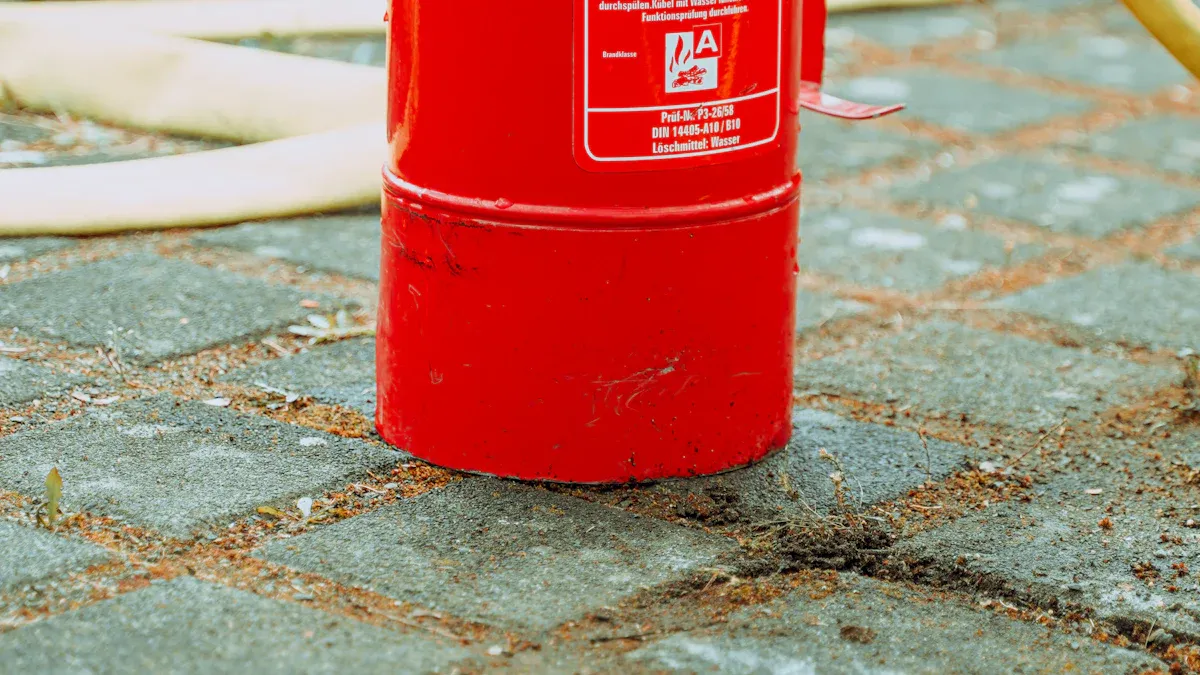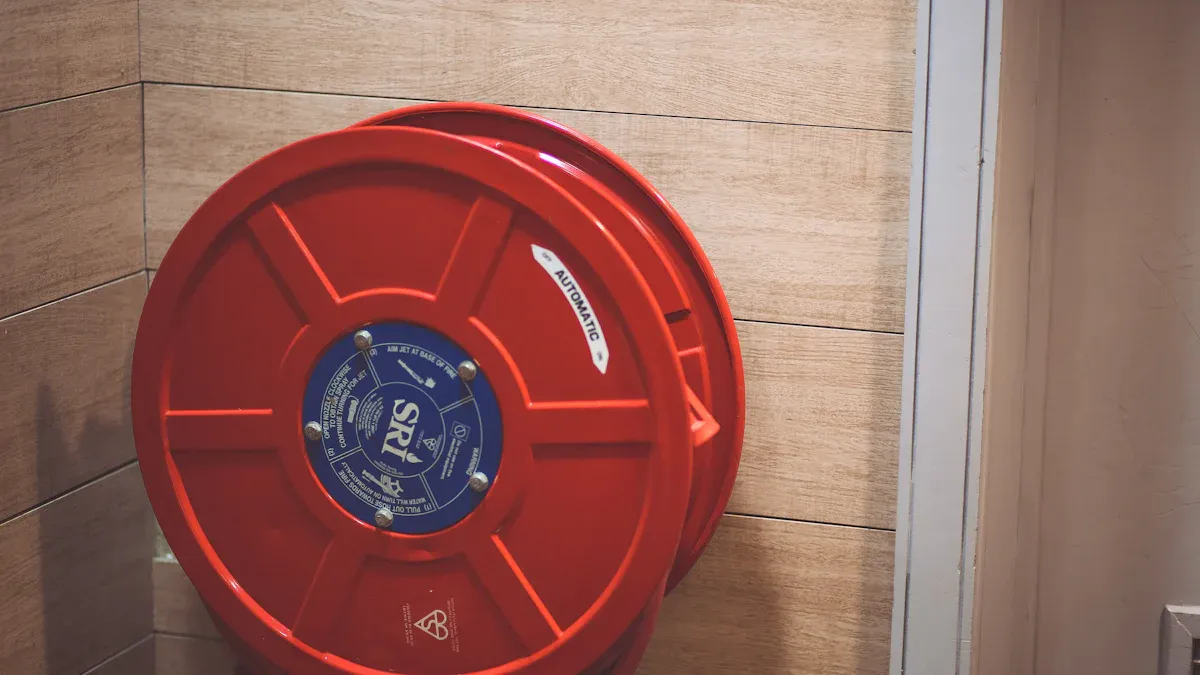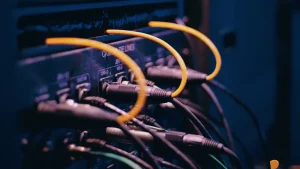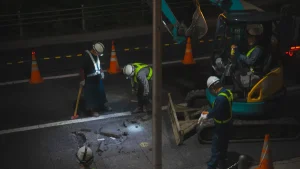
Fireproof fiber optics are essential for protecting commercial buildings. These cables guarantee uninterrupted communication during emergencies, thereby reducing risks to occupants. By adhering to EU safety standards, such as the Construction Products Regulation (CPR) and EN 50575, fireproof fiber optics enhance fire safety by promoting structural integrity, energy efficiency, and sustainable resource use. Compliance with these standards minimizes hazards, providing robust protection for lives and property.
Key Takeaways
- Fire-resistant fiber optic cables help keep communication working in emergencies. This improves safety for people in buildings.
- Following EU rules like CPR and EN 50575 reduces fire dangers. It also makes sure cables work well.
- Choosing cables with the right Euroclass rating, like B2ca, gives better fire protection and safety in business buildings.
Fireproof Fiber Optics: Features and Importance

What Are Fireproof Fiber Optics?
Fireproof fiber optics are specialized cables engineered to withstand high temperatures and resist fire propagation. These cables are designed to maintain their structural integrity and functionality during a fire, ensuring uninterrupted communication and data transmission. Unlike standard cables, fireproof fiber optics incorporate materials that reduce the risk of toxic smoke and flame spread, making them a safer choice for commercial buildings.
Several types of fireproof fiber optic cables are available, each tailored to specific applications. For instance, LSZH (Low Smoke Zero Halogen) cables minimize smoke and toxic emissions, enhancing safety for building occupants. Similarly, OFNP (Optical Fiber Non-conductive Plenum) and OFNR (Optical Fiber Non-conductive Riser) cables are designed to meet stringent fire safety standards for plenum and riser spaces, respectively. These cables comply with international and European standards, such as IEC 60331 and BS EN 50200, ensuring their reliability in fire-prone environments.
The materials and engineering standards that define fireproof fiber optics include certifications like LCPB, UKAS, and BSI. These certifications validate the cables’ performance under fire conditions, ensuring they meet the safety requirements for commercial buildings. The table below highlights some common fire-rated cable types and their applications:
| Code | Description | Application |
|---|---|---|
| OFNP | Optical Fiber Non-conductive Plenum Cable | Plenum, overhead, fiber only |
| OFCP | Optical Fiber Conductive Plenum Cable | Plenum, overhead, hybrid |
| OFNR | Optical Fiber Non-conductive Riser Cable | Riser, backbone, fiber only |
| OFCR | Optical Fiber Conductive Riser Cable | Riser, backbone, hybrid |
| OFNG | Optical Fiber Non-conductive General-Purpose | General purpose, horizontal |
| OFCG | Optical Fiber Conductive General-Purpose | General purpose |
Role in Fire Safety for Commercial Buildings
Fireproof fiber optics play a critical role in enhancing fire safety within commercial buildings. These cables ensure that essential communication systems remain operational during emergencies, enabling swift coordination and evacuation. By resisting fire propagation, they help contain the spread of flames, reducing damage to property and infrastructure.
The use of fireproof fiber optics also minimizes the release of harmful substances during a fire. LSZH cables, for example, do not contain halogenated materials, which can produce toxic byproducts when burned. This feature significantly reduces health risks for occupants and first responders. Additionally, B1-grade cables are designed to emit low levels of smoke, further improving visibility and safety during evacuation.
Compliance with fire safety regulations is another key benefit of using fireproof fiber optics. Standards such as BS 7211, BS 7629, and BS EN 60332 ensure that these cables meet rigorous testing criteria for fire resistance, smoke emission, and toxicity. By adhering to these standards, commercial buildings can achieve higher levels of safety and reduce liability risks.
EU Safety Standards for Fireproof Fiber Optics

Overview of CPR and EN 50575
The European Union has established stringent safety standards to ensure the reliability and fire resistance of cables used in commercial buildings. The Construction Products Regulation (CPR) and EN 50575 are two key frameworks that govern the performance and compliance of fireproof fiber optics. These standards aim to enhance building safety by minimizing fire risks and ensuring that cables meet specific performance criteria under fire conditions.
The CPR mandates that all construction products, including cables, must meet harmonized safety requirements. EN 50575, a subset of CPR, specifically addresses the fire performance of power, control, and communication cables. It outlines the testing methods and classification systems used to evaluate a cable’s behavior during a fire. Manufacturers must provide a Declaration of Performance (DoP) and affix the CE marking to demonstrate compliance with these standards.
The compliance process evaluates several critical characteristics of fireproof fiber optics, as shown in the table below:
| Compliance Characteristic | Description |
|---|---|
| Fire behavior | Measures how the cable reacts to fire. |
| Heat release | Quantifies the heat emitted during a fire. |
| Smoke development | Assesses the amount of smoke produced by the cable in a fire. |
| Droplets/Particles formation | Evaluates the emission of droplets or particles during a fire. |
| Acidity/corrosivity | Measures the acidity of gases released during combustion. |
| Mechanical properties | Determines the physical durability of the cable. |
| Electrical properties | Assesses the electrical performance under fire conditions. |
| Safety in case of a short-circuit | Evaluates the cable’s safety during electrical faults. |
| Declaration of Performance (DoP) | Required documentation detailing the cable’s performance characteristics. |
| CE marking | Certification indicating compliance with European safety standards. |
By adhering to CPR and EN 50575, manufacturers and building operators can ensure that fireproof fiber optics meet the highest safety standards, reducing risks to both occupants and infrastructure.
Classifications and Testing Criteria (e.g., B2ca, Cca)
The CPR classification system categorizes cables based on their fire performance, with Euroclasses such as B2ca and Cca being the most relevant for fireproof fiber optics. These classifications help stakeholders identify cables that meet specific safety requirements for commercial buildings.
B2ca cables represent one of the highest levels of fire resistance. They are designed to limit flame spread, reduce heat release, and minimize smoke production. Since 2022, these cables have been mandated in EU commercial buildings, reflecting their critical role in fire safety. Manufacturers have responded to this demand, with B2ca cables now accounting for 41% of production lines—a 140% increase since 2019. This trend underscores the growing importance of high-performance fireproof fiber optics in the market.
Cca cables, while slightly lower in fire resistance than B2ca, still meet stringent safety standards. They are suitable for applications where moderate fire performance is acceptable. Both classifications undergo rigorous testing to ensure compliance with EN standards. The table below highlights the standardized tests used to differentiate these classifications:
| Euroclass | EN ISO 1716 (Gross heat of combustion) | EN 50399 (Heat release, Flame spread) | EN 60332-1-2 (Flame propagation) | EN 61034-2 (Smoke production) | EN 60754-2 (Acidity) |
|---|---|---|---|---|---|
| B2ca | x | x | # | # | # |
| Cca | x | x | # | # | # |
The rigorous testing criteria ensure that fireproof fiber optics perform reliably under fire conditions. These classifications also simplify the selection process for architects, engineers, and building managers, enabling them to choose cables that align with their specific safety requirements.
Tip: When selecting fireproof fiber optics, always verify the Euroclass rating and ensure the cable includes a CE marking and Declaration of Performance. These indicators confirm compliance with EU safety standards.
Ensuring Compliance with Fireproof Fiber Optics
CE Marking and Declaration of Performance (DoP)
CE marking and the Declaration of Performance (DoP) are essential components of compliance for cables used in commercial buildings. The CE marking signifies that a product meets the European Union’s safety, health, and environmental protection standards. For fireproof cables, this includes adherence to the Construction Products Regulation (CPR) and EN 50575.
The DoP serves as a formal document that outlines the cable’s performance characteristics. It provides critical information, such as fire resistance classification, smoke emission levels, and mechanical durability. Manufacturers must issue this document to demonstrate that their products meet the required standards. Building operators and contractors should always request the DoP when sourcing cables to ensure compliance with EU regulations.
Practical Steps for Implementation
Implementing fireproof fiber optic cables in commercial buildings requires a systematic approach. First, stakeholders should assess the building’s specific fire safety requirements. This includes identifying high-risk areas, such as plenum spaces and riser shafts, where fire-resistant cables are essential.
Next, selecting cables with the appropriate Euroclass rating is crucial. For example, B2ca-rated cables offer superior fire resistance and are suitable for critical applications. Contractors should verify that the selected cables carry the CE marking and include a valid DoP.
Proper installation is equally important. Installers must follow manufacturer guidelines and industry best practices to ensure optimal performance. Regular inspections and maintenance can further enhance safety by identifying potential issues before they escalate.
Tip: Collaborating with certified suppliers and installers can streamline the compliance process and ensure that all safety standards are met.
Fireproof fiber optic cables are vital for enhancing safety and ensuring compliance in commercial buildings. Adhering to EU safety standards like CPR and EN 50575 offers numerous benefits:
- Since 2017, LSZH cables have been mandatory in public infrastructure due to their low smoke and non-toxic properties.
- LSZH cables now account for over 60% of new installations in EU commercial buildings, up from 35% in 2015.
- In 2022, data centers consumed 19% of global LSZH cable production, driven by sustainability goals.
Building managers should prioritize compliance by selecting certified cables and collaborating with trusted suppliers. Proactive measures ensure safer environments and align with regulatory requirements.
FAQ
What are the key benefits of using fireproof fiber optic cables?
Fireproof fiber optic cables ensure uninterrupted communication during emergencies. They reduce fire risks, limit toxic emissions, and comply with EU safety standards, safeguarding lives and property in commercial buildings.
How can building managers verify cable compliance with EU standards?
Managers should check for CE markings and request the Declaration of Performance (DoP). These documents confirm that the cables meet the required safety and performance criteria.
Are fireproof fiber optic cables more expensive than standard cables?
Yes, fireproof cables often cost more due to their specialized materials and certifications. However, their safety benefits and compliance with regulations justify the investment for commercial buildings.
Tip: Always consult certified suppliers to ensure cost-effective and compliant solutions.



